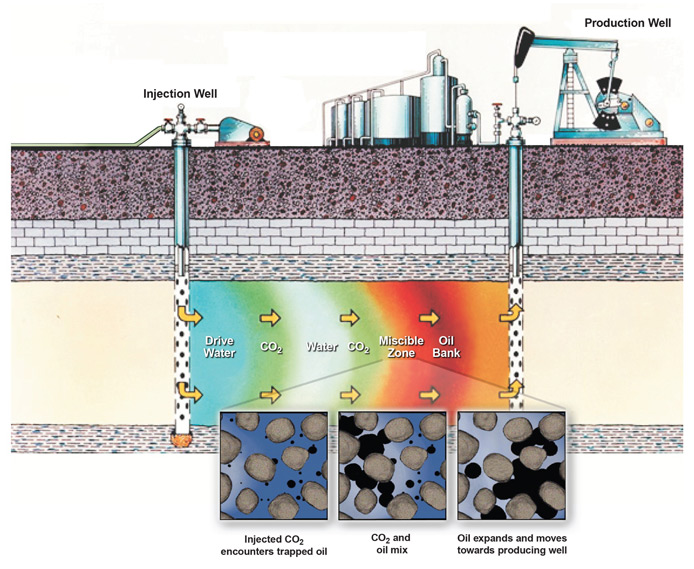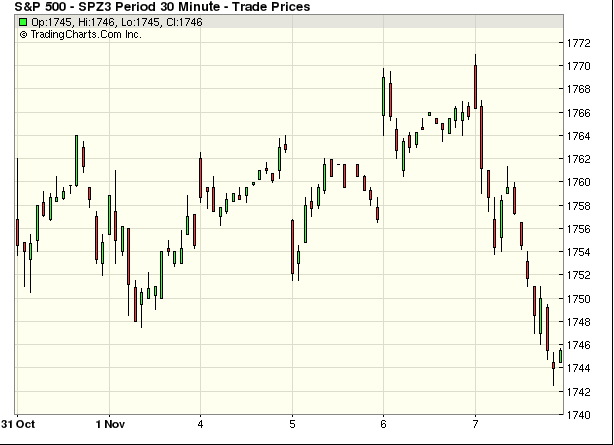Timing & trends
Energy Trends Are Kind To Investors
The energy industry’s unique place in the global economy creates an endless stream of bull markets and big trends.
For example, recently the big trends have been hitting one after the other, producing gains like…
– 1,157.63% gains from the bull market in solar – enough to turn a $20k investment into $178,000…
– 1,689.94% gains from the bull market in oil tankers – enough to turn every $20k invested into $357,988…
– 2,431.745% gains from the bull market in North American on-shore drill rigs – enough to turn every $20k invested into $506,350…
These are five trends investors should be paying the most attention to right now because so much industry money is piling into them…
1. The Super Boom in Subsea Infrastructure. The Oil & Gas industry is increasing investment FIVE TIMES over from $27 billion a year to $130 billion a year on new unseen infrastructure.
2. The Boom in Oil Production technology that is TRIPLING the value of existing wells: It’s an investor’s dream-come-true because it is the equivalent of re-discovering every known oil-field TWICE OVER.
3. The Boom in Hyper Oil & Gas Hunting. New technology discovers new oil & gas fields FIFTEEN TIMES FASTER than earlier methods. This tech is sweeping through the industry like wild-fire as explorers race to find new fields first… but the tech is where investors will make the biggest returns, the fastest.
4. The $200 Billion Boom in Specialized Engineering Firms: A pipeline of $10 billion + projects easily totaling over $200 billion will likely make these engineering firms – and their investors – rich
5. The Multi-Billion Dollar Shale Revolution Goes Global.
For Example, 2. The Boom in Oil Production Technology that is Tripliing the value of existing oil wells works like this:

Step one: Capture CO2, Carbon gas, emitted by the refiners. Full operations will capture 90% of carbon dioxide emitted by refiners – enough to condense the carbon impact of 10 refineries essentially down to the size of one.
Step two: The CO2 is then transported directly to oil wells.
Step three: Where it is injected into the ground to increase pressure in the wells. When the CO2 mixes with the trapped oil the oil EXPANDS. The increased pressure pumps the oil out.
So for every $1 of oil produced in existing wells this process produces $2 more.
Just one oil field south of Houston, Texas, is looking at an increase from 1.6 million barrels of recoverable oil to 3.1 million barrels.
This technology is a MAJOR NEW PROFIT CENTER for the oil industry.
If you can consistently get in front of these big trends then you can produce staggering gains.
For example, if you’d been investing along industry insiders and caught the solar boom in 2006 you could’ve turned a $10,000 investment in First Solar into $125,763 in three short years.
Then, if you grabbed the next big energy trend, the shale railroad boom (The boom in rail was caused by the overabundance in shale oil overwhelming existing pipelines), you could’ve turned that $125,000 into $669,012 in another four years.
That’s just two energy trends but together they could’ve turned your $10k initial investment into over $669,000 in about 7 years.
To put that in perspective consider the S&P 500 during the same period delivered a cumulative 7-year return of just 14.24% – or only enough to grow a $10,000 investment into $11,424.
James Stafford

This week the “Near-Term” is giving “alerts” that are within the uptrend.
Conflict will continue with the prospect of a “Winter of Discontent” as increasing numbers of taxpayers watch their thermometers and savings drop as Obamacare’s Titanic discovers political and operational icebergs.


 Mike Campbell: Is the Twitter IPO a foreshadowing of the new dotcom bubble or just a continuation of the Social Networking Revolution?
Mike Campbell: Is the Twitter IPO a foreshadowing of the new dotcom bubble or just a continuation of the Social Networking Revolution?
Quick Facts
- 1.15 billion Facebook users
- The +1 button is served 5 billion times per day (surely this post is worthy of a plus one.)
- 343 million active users on Google+
- 238 million linkedin users
- 232 million Twitter users
- 130 million Instgram users
- 4.2 billion people use mobile device to access social media
- There are over 10 million facebook aps
- 250 billion photos are uploaded every day
- 500 million tweets are sent a day
- There are over 1 billion unique monthly visitors on YouTube
Mike

It is always wise to look ahead, but difficult to look further than you can see. – Winston Churchill
- One possible future: The dream that lies on that thin line between genius and madness
- How drone tech is exploding in at least one non-military, surefire market.
- The BP drone debut of 2010 and beyond
What if I told you that the modern-day smartphone was conceived by a man over a hundred years ago? No, this man was not a science-fiction writer. He was one of the world’s greatest inventors, who went a step beyond his contemporaries, and then another step.
One day, he said, people would watch the World Series from a device small enough to fit in your pocket… Remember: this was well before YouTube and iPhones. He went into further detail, after being interviewed byThe New York Times. The quote was published in a 1909 article of Popular Mechanics:
“It will be possible, for instance, for a businessman in New York to dictate instructions and have them appear in type at his office in London or elsewhere. He will be able to call up, from his desk, and talk to any telephone subscriber on the globe. It will only be necessary to carry an inexpensive instrument no bigger than a watch, which will enable its bearer to hear anywhere on sea or land for distances of thousands of miles.”
Can you guess who said that?
Now, don’t cheat. I’ll tell you the answer in a moment, as it applies to today’s investment angle. Here’s your second clue…
As a boy, living in Croatia, he dreamed of harnessing the rapids of Niagara Falls to generate electricity for thousands of homes. After he immigrated to the U.S. years later, he did just that — building the world’s first hydroelectric dam.
But that was only the beginning of what he did for the U.S., and would do for its military.
Have you figured out who this man is yet?
If you haven’t, you’re not alone. But let me throw you some softballs…
This inventor gave the world radar, X-ray, neon and fluorescent lighting. He gave us remote control and robotics… Yes. Robotics, over 100 years ago. And the concept of drones.
He also invented radio.
Your last clue: He held over 700 patents, most which stemmed from his early work with AC electricity. He is the father of the 20th century.
Most would guess the widely acclaimed historical favorite, Thomas Edison. But it was, in fact, Edison’s archrival who did these things: the forgotten genius, Nikola Tesla.
History has overlooked Tesla for many reasons. Among them: Edison launched a smear campaign during their war of the currents. J.P. Morgan (a founder of the Federal Reserve System, mind you) blackballed Tesla after learning his intent to construct a hub for free, worldwide, wireless electricity and communications. And after he passed away, penniless, FBI head J. Edgar Hoover and his G-men confiscated his scientific papers and inventions — rather than let them be passed down to his nephew — adding to the secret file on Tesla they’d amassed in order to use his mil-tech.
The U.S. government was neither interested nor ready to use Tesla’s mil-tech until decades later in WWI, where it was used in remotely piloted vehicles (RPVs) and later in unmanned underwater vehicles (UUVs). Now his ideas serve as components of modern weapons systems.
Could the Same Drone Tech Oil Company’s Use Save the Planet?
It is important to trace today’s tech back to the intention of the inventors who brought innovations into this world. In this case, Tesla’s idea for machine drones was that they would be a weapon that would end all warfare, taking humans out of the equation and eventually focusing on resource preservation. The same can be said of his anti-weapon laser system that kept skies free of missiles… although the press labeled it a “death beam” at the time.
The question remains: Could we still change the effects of tech by changing our intent behind it?
If you’ve been reading the past couple days, you know how the military is using drone tech. Oil companies are using it too. Today, we finish our series on drones, and then end on a different note — a vision more in line with the inventor’s original intent.

Read on as our ex-naval officer and Harvard-trained geologist Byron King shows you how drone tech is being used to help the planet, and make money doing it.
The Drone Debut of 2010
The recent uses for drones are not the first time they’ve been used to monitor oil spills.
In the spring and summer of 2010, during the BP oil well blowout in the Gulf of Mexico (GOM), the U.S. government approved several different kinds of military-operated drones to fly over the water — in very busy airspace — to perform imagery of oil slicks and such.
I know quite a bit about this because I covered the blowout, its effects and the aftermath in an extensive set of articles in my other newsletter Outstanding Investments.
Editor (Byron King) Note: From almost the first day of the BP blowout, Byron worked with Joel Achenbach of The Washington Post as the story evolved. He had many discussions with Joel, and explained the astonishing technology behind what was going on. Joel was kind enough to mention Byron in an introductory note in his book about the blowout, A Hole at the Bottom of the Sea: The Race to Kill the BP Oil Gusher. ]
At any rate… back during the BP blowout, I participated in a press conference with Coast Guard Adm. Mary Landry, who was in charge of the U.S. government response. I asked about the use of drones and the success in gathering data versus the risk of airspace management. Adm. Landry was very candid about how much effort went into airspace “deconfliction.” In other words, the U.S. military had Navy E-2C aircraft and Air Force AWACS aircraft flying high overhead to monitor the drone flight paths. The idea was to keep the drones far away from other air traffic flying over the GOM.
The BP Drone Effort
Having learned a few things from its near-death experience in the GOM, in late 2012, BP sponsored a drone flight for its own purposes. It was BP’s first foray into operating drones, and the flight lasted all of 20 minutes.
But that short BP flight proved a key point. The drone was an Aeryon Scout UAV guided by an engineer who was not even a licensed pilot. He controlled the drone from a hand-held tablet computer.
Looking ahead, this idea is going places. Drones are relatively inexpensive to purchase and operate compared with larger aircraft. And there’s no need for a human being to risk life and limb flying into extreme environments.
Or consider that if you’re an oil and gas company using drones, you don’t need a dedicated aviation branch on your payroll. You can utilize less-specialized engineering staff to operate drones when needed. Then when the flying is finished, everyone can return to other tasks. Plus, there are smaller ground crews and maintenance personnel required for drones as compared with those required for conventional aircraft. More savings.
Finally, even for jobs that don’t currently involve aircraft at all, like inspecting the outside of an offshore oil rig, drones could be one way to invest in the future. Drones can go to dangerous, hard-to-reach places where companies now assume liability for sending employees directly.
Consider an example such as inspecting hard-to-see nooks and crannies of an oil rig. Send a man topside in a harness to check for rust? Or instead, use a drone with a special camera precisely tuned to detect the wavelengths of light given off by rust or other corrosion? The human operator looks through a camera from a safe, dry location.
Oh, and did you know there are drones for underwater jobs, too? I’ll save that for another day.
Safe to say U.S. oil and gas companies and others have lots of reasons to incorporate former mil-tech UAV platforms into their business. It’ll take time, but we’ll live to see it sooner, rather than later.
The army has been using designs for a decade now, well before we began seeing photos of the Predator drone all around the media a couple of years ago. And while the platform is sound, optics and small electronics have advanced a lot in that time. So now they’ll upgrade.
Looking Ahead
From where we sit, looking at a year or 18 months or so before the FAA comes up with new rules for drones in U.S. civilian airspace, it’s a good time to think about ways to play this pending opportunity.
Put simply, oil companies look for oil, which doesn’t shoot back. It’s not like hunting terrorists in hostile lands. In most cases, oil companies could do the job just as well the old-fashioned way — with manned aircraft or ships sailing across the wine-dark sea. But then again, manned aircraft and ships are expense elements that drive up the finding cost. And deploying drones to do the work — at least, the routine work — saves money.
If you’re still cautious about investing in UAV technology, you could wait and see how fast the commercial drone market grows after the FAA ruling. There’s nothing wrong with that approach.
But even though we don’t know exactly how the FAA will allow drones to operate in the hands of American businesses, we know they will, and it’s safe to say we’ll be seeing more drones as the years go on. Maybe one day we’ll think no more of it than seeing a conventional airplane in the sky.
Best wishes,
Byron W. King
Josh’s Grasmick Note: “What we sell are personal drones,” Maker Movement icon Chris Anderson told us during our interview this past spring about him and his new company DIY Drones.
“We don’t sell to the military, we don’t sell to the government; we sell to regular people, and we hope they will find applications and, in a sense, recontextualize what drones are for and change the definition of drone, at least the public perception, from military weapon to useful tool that we see every day doing something nonthreatening.”
His firm’s products weigh 2 or 3 pounds and fly under 400 feet, so they don’t interfere with aviation. The applications are nearly endless:
“There’s some of the obvious stuff: search and rescue, a lot of sports, Hollywood stuff using a kind of extended camera boom.
“But then there’s stuff like agriculture, which is just sort of recognizing how little farmers know about their crops and how important it would be to get a kind of a daily aerial shot. You’d useless chemicals, adjust water, harvest at the right time, spot outbreaks, and reduce outbreaks more quickly.
“When the computer was first in the popular consciousness, there was this issue with Big Brother,” Anderson went on, “it was like, ‘The computers will be used to spy on us,’ and it was really scary. I mean it was very overwhelming.
“When the Internet was first deployed, again it was the information superhighway; there was a highway that was going to be used by big companies to, again, enslave us. 3-D printing is another example. Right now you say 3-D printing and invariably, people say, ‘What if people print guns?’
“This is just a phase. Drones started in the military, and they’re being used to kill people. So it’s very easy for people to project to that same terrifying vehicle over our own skies, and that’s almost certainly not going to happen. When we hear about a new technology, we tend to quickly jump to the worst, scariest applications. Only once we’re overwhelmed by this flood of nonscary applications do we start to see it as it really is.”
Click here to invest in this long awaited revolution Chris Anderson talks about now.
Thank you for reading Tomorrow in Review. We greatly value your questions and comments. Click here to send us feedback.

Solar company Suntech takes step towards final wind-down












